From the Washabuck River we travelled south through the Barra Strait to spend a couple of days in and around Denys Basin. The current can reach several knots in the Barra Strait narrows, so we left the anchorage at Washabuck River to time our arrival for slack water mid-tide.
The Grand Narrows Railway bridge in Barra Strait was a major feat of engineering in its time due to it’s length (nearly a mile), depths in the strait (almost 90ft), the currents in Barra Strait, and the presence of ice during the winter and spring breakup. A five-car special train carrying the Governor General of Canada, Lord Stanley, was the first to cross when it was completed in 1890. Lord Stanley was one of the original inductees into the Hockey Hall of Fame and is known to hockey fans worldwide for donating a silver punch-bowl to be awarded to Canada’s top-ranked amateur ice hockey team each season. This is a suitable trophy, as there have been times that hockey’s championship game has in fact been a punch bowl.
Trip highlights from September 4th to 6th, 2016 follow. Click any image for a larger view, or click the position to view the location on a map. And a live map of our current route and most recent log entries always is available at http://mvdirona.com/maps
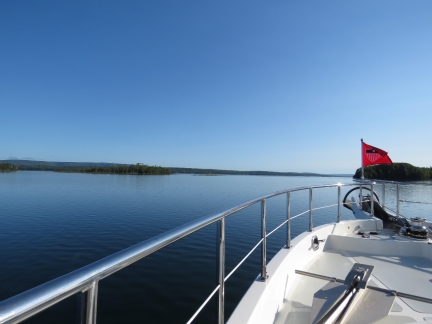 |
Underway
Position: -60 50.62, 46 2.64
Underway on a beautiful clear and calm morning. We’re planning to pass through the narrows at Barra Strait today, where current can reach several knots, so we left the anchorage to time our arrival for slack water mid-tide.
|
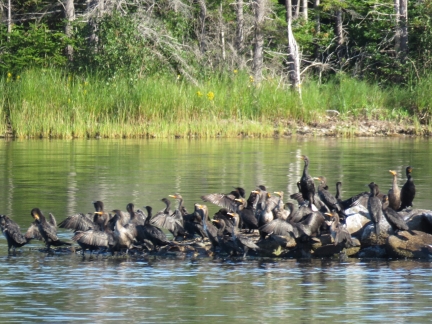 |
Cormorants
Position: -60 50.52, 46 2.74
Cormorants crowding the tip of an islet as we leave Washabuck River Harbour.
|
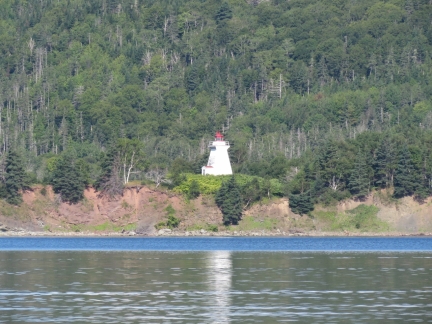 |
Gillis Point Light
Position: -60 45.63, 46 1.07
The light on Gillis Point no longer is operational, but the tower still stands.
|
 |
Barra Strait Bridge
Position: -60 47.62, 45 57.84
Passing through the Barra Strait Bridge behind SV Seraph of Hamilton. The bridge clearance is 29.5ft, just barely too low for our 30ft air draft.
|
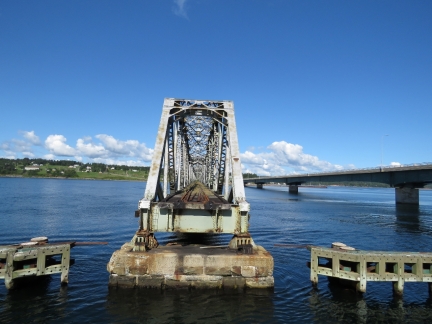 |
Grand Narrows Bridge
Position: -60 47.76, 45 57.64
The Grand Narrows Railway bridge was a major feat of engineering in its time due to it’s length (nearly a mile), depths in the strait (almost 90ft), the currents in Barra Strait, and the presence of ice during the winter and spring breakup. A five-car special train carrying the Governor General of Canada, Lord Stanley, was the first to cross when it was completed in 1890. Lord Stanley was one of the original inductees into the Hockey Hall of Fame and is known to hockey fans worldwide for donating a silver punch-bowl to be awarded to Canada’s top-ranked amateur ice hockey team each season.
|
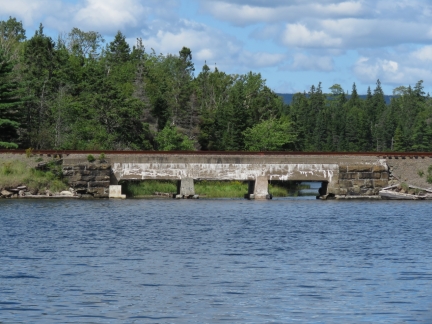 |
Portage Creek
Position: -60 59.31, 45 55.88
At anchor off the low railway bridge into Portage Creek. This is a lovely and secluded anchorage, particularly in today’s excellent weather.
|
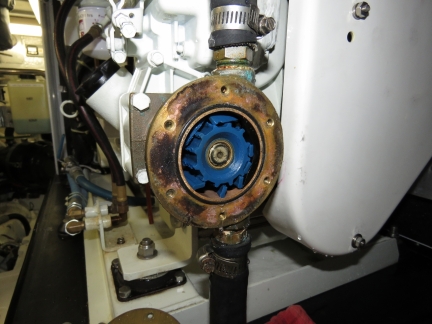 |
Impeller
Position: -60 59.30, 45 55.87
We got a Maretron alarm indicating the generator had hit 199F (the generator will shut down if it goes over 205F). This is what was left of the raw-water pump impeller. We’d just changed it in June of this year, only 170 hours ago, an unusually short time to fail. Likely we had a jellyfish or some other obstruction that caused the pump to run dry for a period.
|
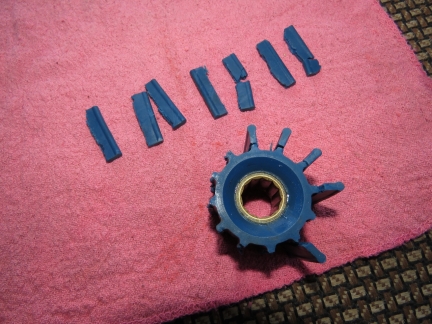 |
Blades
Position: -60 59.30, 45 55.87
The failed impeller threw seven blades—this is the first time we’ve ever had a Globe Impeller break apart like that. You’ve got to make sure you find all the missing blades. In this case, four of the seven were at the heat exchanger entrance.
|
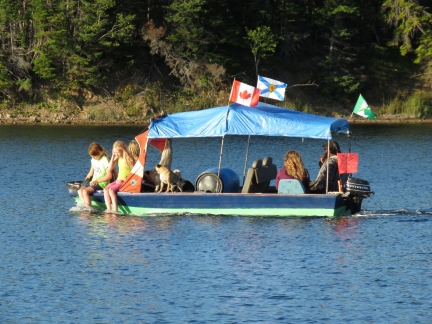 |
Sunday Tour
Position: -60 59.29, 45 55.87
Perhaps a half-dozen small craft, likely from nearby Orangedale, toured the basin while we were anchored. Everyone seemed to be out enjoying the sunny long weekend.
|
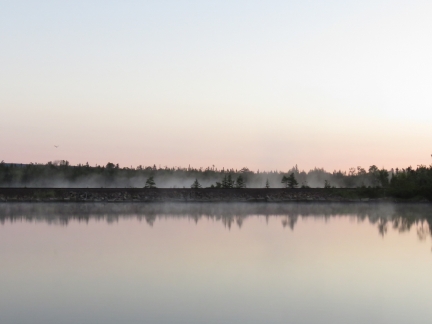 |
Sea Smoke
Position: -60 59.30, 45 55.86
Sea smoke in Portage Creek this morning.
|
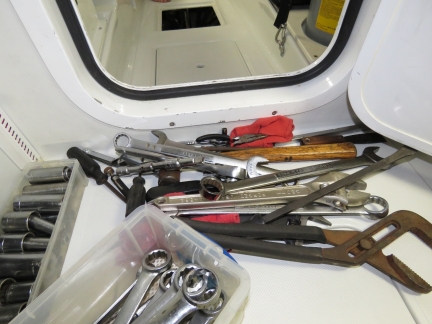 |
Tools
Position: -61 4.53, 45 51.82
We just aligned the main engine. It was a big job, and there were a lot of tools in play. We’ll write up the details in a blog posting.
|
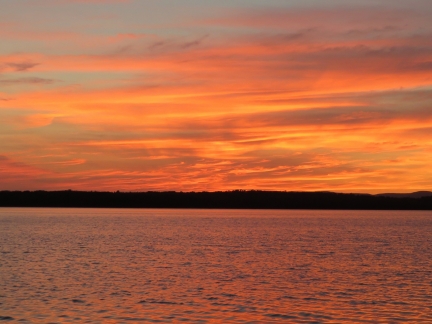 |
Sunset
Position: -61 4.53, 45 51.82
Sunset at the head of remote and isolated Denys Basin.
|
 |
Binning
Position: -61 4.52, 45 51.81
In the semiconductor world, binning refers to testing at the end of the line and sorting on some dimension. For example, on processors, the very best bins can run at higher frequency while the less-capable parts are sold to run at a lower frequency and a lower cost. James said that Jennifer appeared to be binning the raspberries ripest first.
|
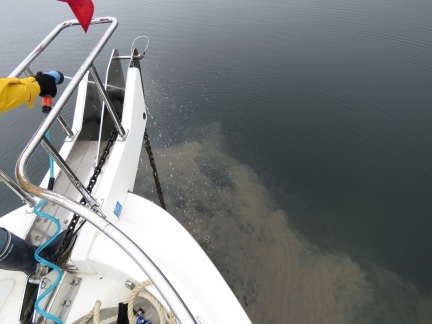 |
Mud
Position: -61 4.53, 45 51.81
The anchor rode came up encrusted with so much thick, sticky mud we couldn’t see the chain and at times couldn’t even make out the chain shape. Generally the anchorages in the Bras d’Or Lakes have had excellent holding with these mud bottoms.
|
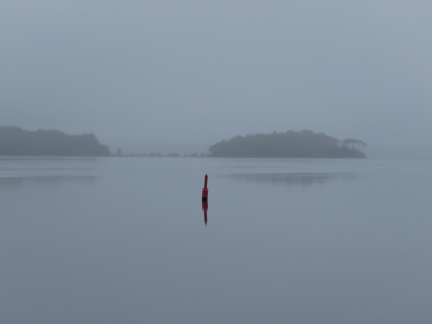 |
Fog
Position: -61 1.39, 45 53.72
Leaving Denys Basin in a very calm, but foggy morning.
|
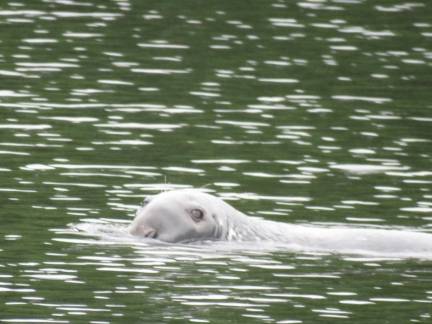 |
Grey Seal
Position: -61 1.40, 45 54.13
We’ve never see a Grey Seal before and weren’t quite sure what this animal was. It’s nostrils are widely space and the head flat, without ear flaps, compared to other seals we’re used to seeing. And it was a big animal. This likely is a bull–they are large and can reach 8.2-10.8 ft (2.5-3.3 m) long and weigh 370-680 lbs (170-310 kg). The Grey Seal is found on both sides of the North Atlantic, ranging between New Jersey and Newfoundland in North America. The largest colony in the world is at Sable Island off Nova Scotia.
|

|
Click the travel log icon on the left to see these locations on a map, with the complete log of our cruise.
On the map page, clicking on a camera or text icon will display a picture and/or log entry for that location, and clicking on the smaller icons along the route will display latitude, longitude and other navigation data for that location. And a live map of our current route and most recent log entries always is available at http://mvdirona.com/maps. |
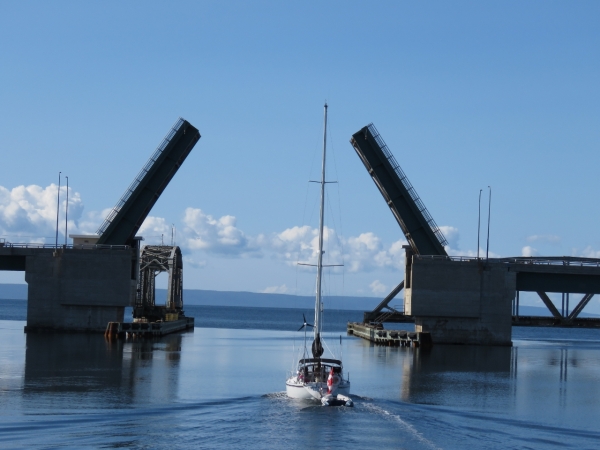
If your comment doesn't show up right away, send us email and we'll dredge it out of the spam filter.